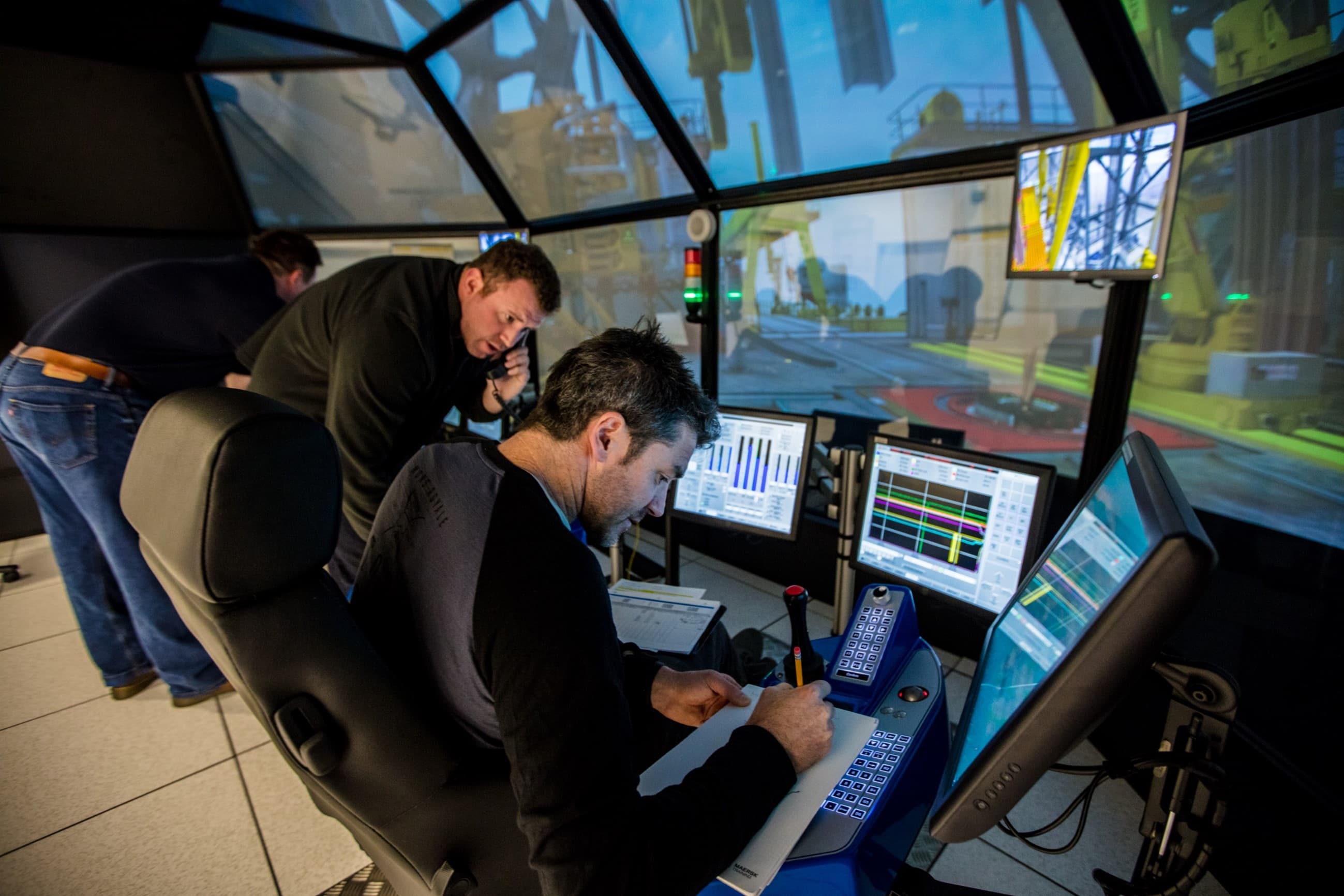Enhancing Oil and Gas Safety Through Human Factors Infusion into Simulation Training
March 2025

Josh Loveland presented this topic at the International Association of Drilling Contractors (IADC) Health, Safety, Environment & Training Conference in Houston in February 2025. Watch his interview with Drilling Contractor, official magazine of the IADC.
Where can we purposely allow learners to make a mistake, fail, or even cause a disaster? The answer – simulators.
Our industry has used simulators in technical training for years and have been successful at it! Well Control, Crane licensing, Dynamic Positioning… what better place to have that safe environment where we can purposely allow errors to compound, without the real-world consequences?
Why not do the same for Crew Resource Management?
In oil and gas, safety isn’t just a procedure—it’s a mindset. One of the most effective ways to shift that mindset is through simulation training built around human factors.
At Maersk Training, we create a psychologically safe environment where participants can practice, fail at, and learn from simulation scenarios utilizing different tools used within CRM. These scenarios help teams prepare for the real challenges they face offshore. Instead of just theory-based training, we use our high-fidelity simulators to bring the learners workspace to life, and that is where the CRM training takes place.
Why human factors matter
Most incidents don’t stem from technical gaps. They happen when people are distracted, fatigued, or miscommunicate under stress. Dr. Madeline Wu, speaking at the 2015 IADC-APAC Conference, identified key causes of situation awareness failures:
-
Distractions
-
Tunnel vision
-
Stress
-
Fatigue
-
High workload
Her study showed that over a 10-month period, 135 incidents occurred, and 67% of those were from a breakdown of the 1st level of Situational Awareness.
Building safety leadership
Simulation also develops leadership. Participants learn to step in early when something feels off, support teammates under pressure, and communicate clearly and decisively.
These behaviours influence daily safety performance. They set the tone for culture.
Backed by research
Research by Ojuola, Mostafa, and Mohamed in 2020 highlights three key drivers of safety success:
-
Ongoing training
-
Transparent communication
-
Safety ownership across roles
Simulation strengthens all three. It builds readiness, fosters trust, and reinforces shared responsibility for safe operations.
From awareness to action
Simulation isn’t about passing or failing. It’s about understanding behaviour and building better habits. We don’t just test procedures. We test how teams respond to pressure, manage distractions, and stay aware of their surroundings. Instead of teaching theory, we let crews experience what happens when communication breaks down or someone is monitoring the wrong gauge for the last 30 minutes. Then we debrief and learn together.
Real learning, lasting impact
Feedback shows the difference. One participant said, “This wasn’t just about rigging—it helped me become a better supervisor. It actually applies to my job.” That’s the goal. Not just knowledge, but real capability and real application.
Our courses integrate CRM (crew resource management) skills like: communication, situational awareness, decision-making, teamwork, leadership, and performance-shaping factors. These are practised in realistic environments—because that’s where they matter most.
Rethink your strategy
Simulation training grounded in human factors is one of the most practical ways to prepare crews for real-world risk. There is a big difference between understanding the theory and experiencing the scenario.
Ask yourself:
-
Are your teams just trained—or truly ready?
-
Can they lead under pressure?
-
Do they practise failure in a safe space?
If not, it’s time to rethink your training strategy.